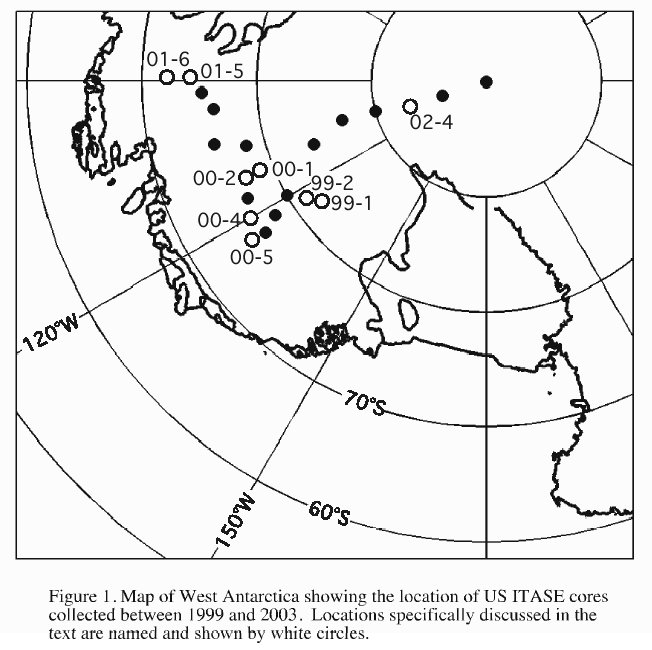High-resolution ice cores from US ITASE (West Antarctica): development and validation of chronologies and determination of precision and accuracy
Eric J. Steig, Paul A. Mayewski, Daniel A. Dixon, Susan D. Kaspari, Markus M. Frey, David P. Schneider, Stephen A. Arcone, Gordon S. Hamilton, V.Blue Spikes, Mary Albert, Deb Meese, Anthony J. Gow, Christoper A. Shuman, James W.C. White, Sharon Sneed, Joseph Flaherty, and Mark Wumkes
Shallow ice cores were obtained from widely distributed sites across the West Antarctic ice sheet, as part of the US ITASE program. The US ITASE cores have been dated by annual layer counting, primarily though the identification of summer peaks in non-sea-salt sulfate (nss-SO4) concentrations. Absolute dating accuracy of <2 years and relative dating accuracy to within +/-1 one year is demonstrated by the identification of multiple volcanic marker horizons in each of the cores, Tambora (1815) being the most prominent. Independent validation of the +/-1 year accuracy is provided by the tracing of isochronal layers from site to site using high-frequency ice penetrating radar observations, and by the timing of mid-winter warming events in stable isotope ratios, which demonstrate significantly better than 1 year accuracy in the last 20 years. Dating precision to +/-1 month is demonstrated by the occurrence of summer nitrate peaks and stable isotope ratios in phase with then nss-SO4, and winter-time sea salt peaks out of phase, with high coherence and a phase variation of <1 month. Dating precision and accuracy are uniform with depth, for at least the last 100 years.

